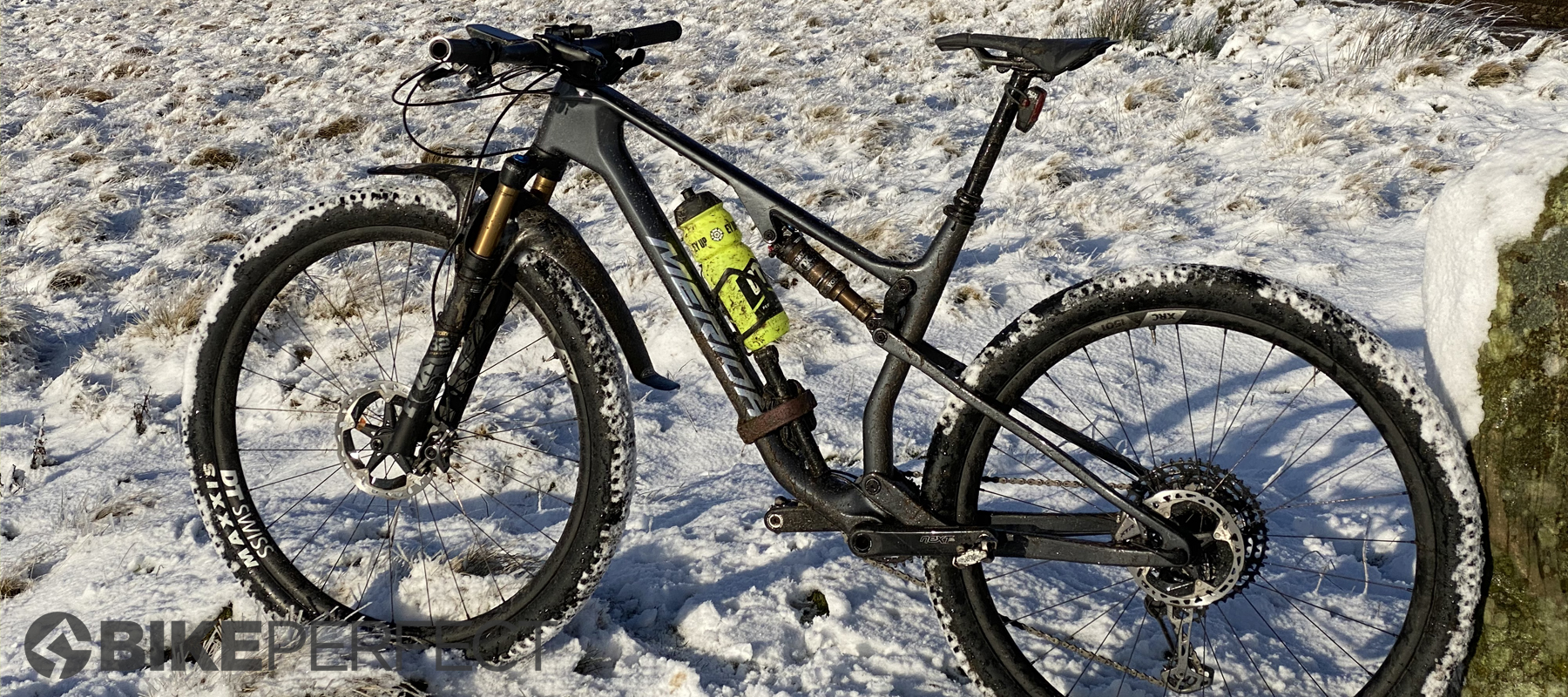Bike Perfect Verdict
Cross-country marathon mile muncher with fast nibble handling and sorted suspension
Pros
- +
Very light yet practical and stiff frame
- +
Very well-sorted suspension
- +
Impressive smoothness and traction
- +
Stabilized race handling
- +
Excellent DT Swiss wheels
- +
Impressive value
- +
Big chainring compatibility
Cons
- -
Heavier than competitors.
- -
Inconsistent, squealing brakes
- -
TwistLoc lockout issues
- -
Bar hits the top tube
- -
Steering is still nervy
Why trust BikePerfect
The Ninety-Six series have been Merida’s flat-out fast, scary steep, super light twin shock race bike for years, racking up a host of XC and marathon wins in the process. This all-new RC version has sorted suspension and impressive frame stiffness that backs up a move towards more confident geometry. The flagship 9000 is excellent value for a shop-bought premium parts special too, although it’s not especially light and there are some brake and lockout glitches.
- Best trail bike: the best trail mountain bikes reviewed and rated
- Best MTB GPS computers: the best GPS computers for mountain biking
Design and geometry
All new Ninety-Six frames (including the 8000 ‘downcountry’ version with a 120mm fork) all use the same mold for the mainframe and rear end. The RC9000 front end uses a more complicated, higher grade ‘CF5 III’ carbon layup that saves 150g (1695g versus the 1845g claimed weight for a medium frame, shock and trimmings) over the CF4 versions. The ‘P-Flex’ pivotless rear end is CF5 on all Ninety-Six bikes, giving 100mm claimed (95mm measured) wheel travel while keeping the back end lighter, simpler and stiffer than a pivoted equivalent. The back end of the bike is also deliberately kept narrow with racers in mind, as that keeps the Q-Factor (pedal spacing) efficient and leaves room for up to a 38T chainring for proper powerhouse riders. That does limit tire size to 2.3-inches, but it can be a proper chunky 2.3-inch like the Maxxis DHR used on the 8000 downcountry version, and the StepCast fork can’t run anything larger anyway. Both composite variants get ‘Nano Matrix’ inclusions in the resin ‘for additional impact resistance’ with a small skidpan on the belly and chain slap guard on the drive side stay.
While travel is the same as the previous bike, the suspension kinematic has been altered, with a higher leverage start and more progression later in the stroke. The Fox rear shock is also remote controlled via the TwistLoc grip on the bars, which is also linked to the fork. While weight and width might be minimalist, there’s plenty of practical detailing on the frame. If you use the supplied extender, there’s room for two large bottles on every size but the small (you’re limited to a small seat tube bottle on that). There’s a two-bolt accessory mount under the top tube, and ‘Non-Slip Tightening’ means all the pivots can be secured with a T30 key.

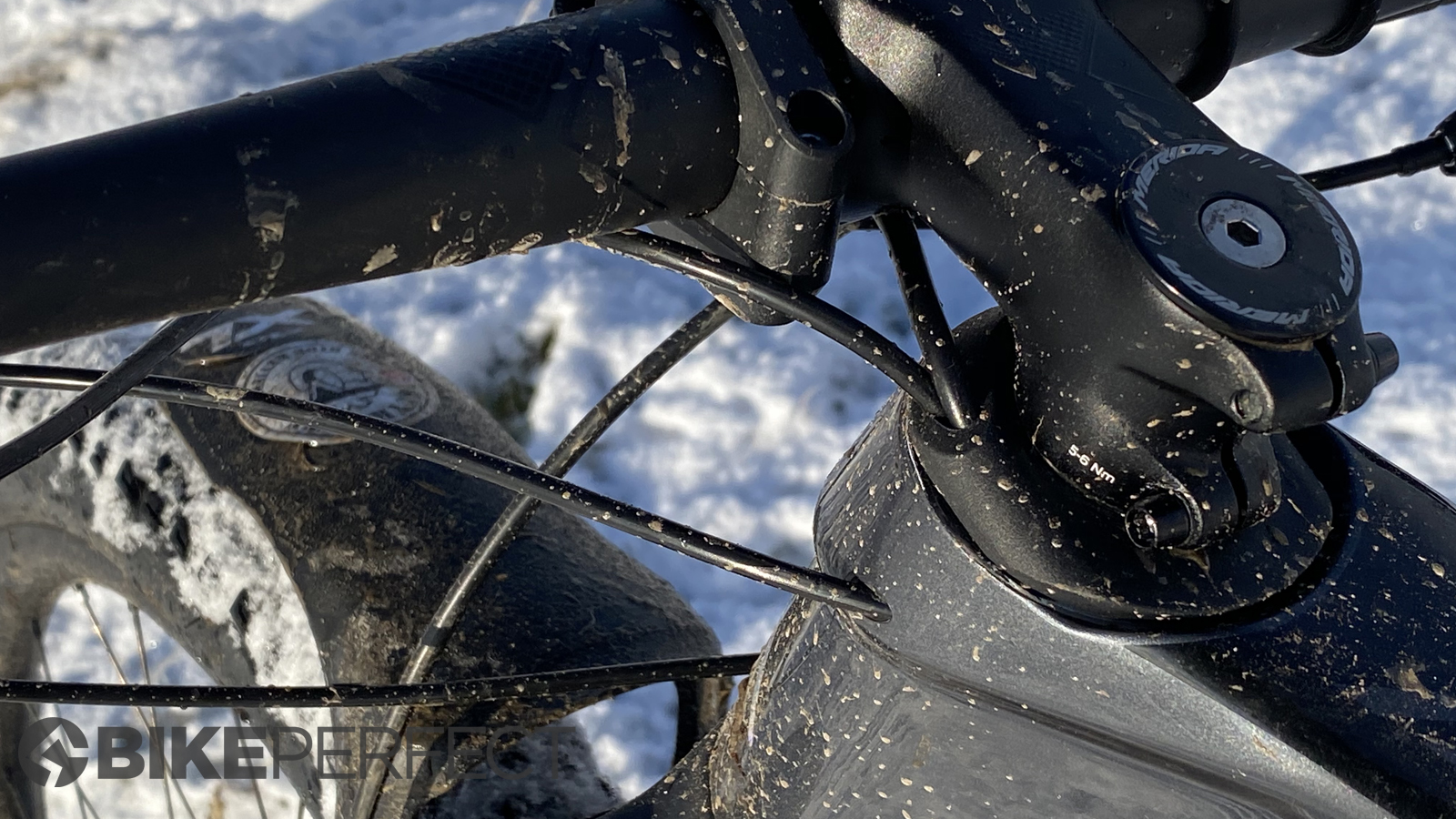
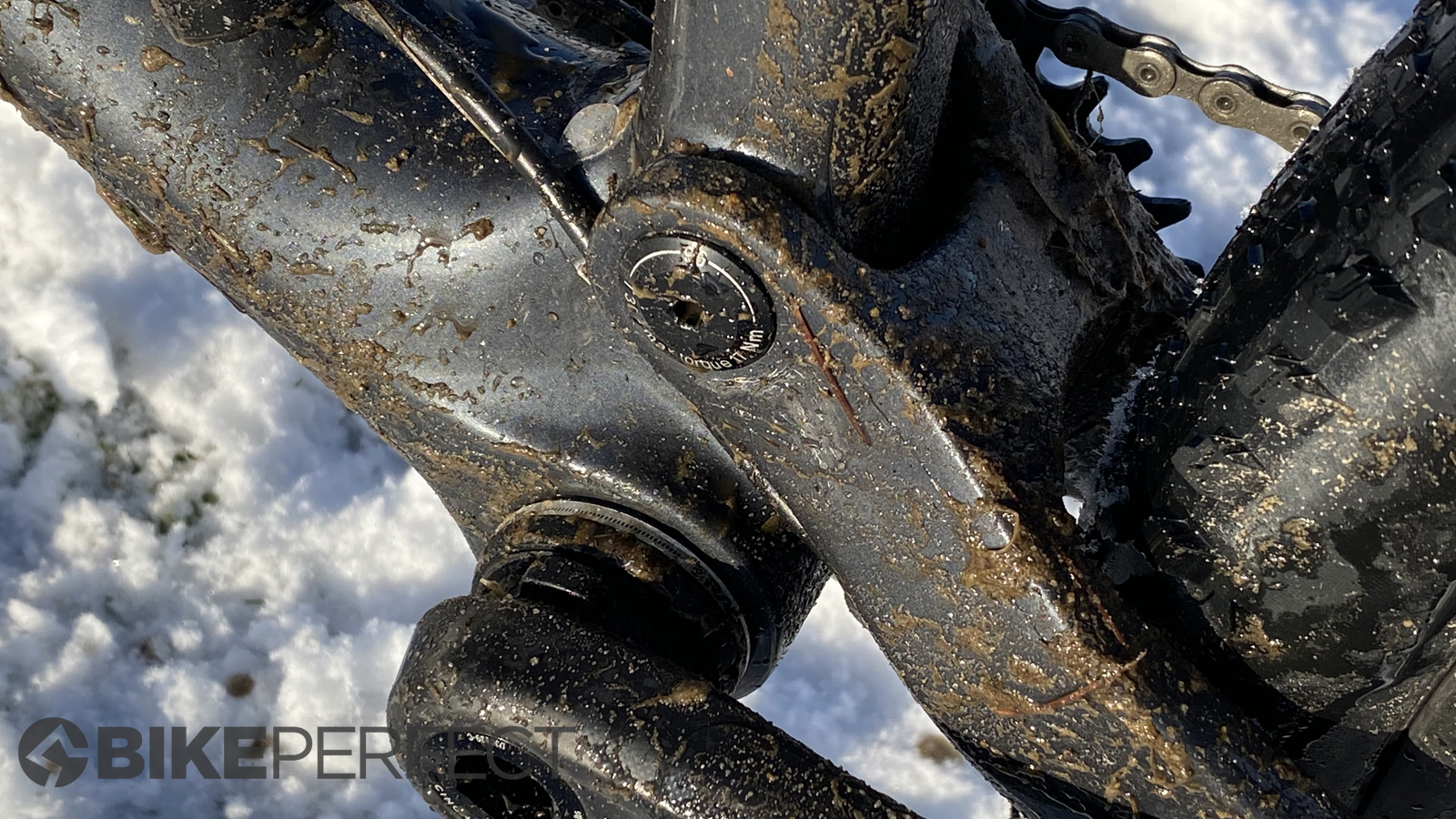
A roadie-style Flat Mount tucks the rear brake inside the seat/chainstay angle. Rear control lines are routed through a separate ‘tunnel’ built into the underside of the chainstay, before sneaking through to the mainframe and then popping out of ‘Wire Ports’ in the oversized headset top cap. That does leave them free to rattle and scuff inside, but it was never an issue when riding. A threaded bottom bracket will be welcomed by DIY mechanics and high mileage riders too.
Geometry is also a lot more user-friendly than the previous Ninety-Six. To be honest, that’s not hard though as that was one of the few MTBs left with a head angle beginning with 7, and even at 1.5-degrees slacker the RC9000 still sits the fork at 68.5-degrees. Seat tube angles are usefully contemporary now, with 76.5-degrees on the S and M sizes and 76-degrees on L and XL. Reach is spot on for the latest generation XC bikes too, stretching from a previous 449mm to 473mm on the large. Long seat posts (470mm on L) make it hard to size up for extra stretch with a 150mm dropper.
Components and build
Merida has fitted out their flagship with appropriately top-end kit, including a Shimano XTR drivetrain and twin-piston disc brakes. Like most XTR bikes, the chainset is a super light Race Face Next SL carbon unit, saving significant weight over the alloy XTR design. The super-light carbon frame rolls on 30mm DT Swiss carbon wheels, although the XRC 1501s are 50g heavier than the XRC1200s so they’re not quite the ultimate option. The 2.25-inch, 670g Maxxis Rekon Race tires are proper World Cup winning rubber, but you will have to turn them tubeless yourself as they come set up with scary light inner tubes. The 44mm offset, 100mm Fox 32 Float SC, Float rear shock and 150mm stroke Transfer dropper post are all top-spec Kashima gold anodized ‘Factory’ versions. Both the shock and fork are linked to a remote for simultaneous lockout, and the RockShox TwistLoc Sprint grip leaves the underbar position free for the Race Face dropper lever. The bars themselves are super light 140g carbon Merida flats, with a 70mm Merida stem on M-XL sizes (60mm on small). You get a super-light carbon base, carbon rail Prologo Scratch M5 PAS saddle with segmented padding and a large central cutout, which thankfully is much more comfortable than it looks. Overall weight is comparatively high for a podium hunter at 10.81kg for our large, which is 500g more than Merida’s claim for a medium.
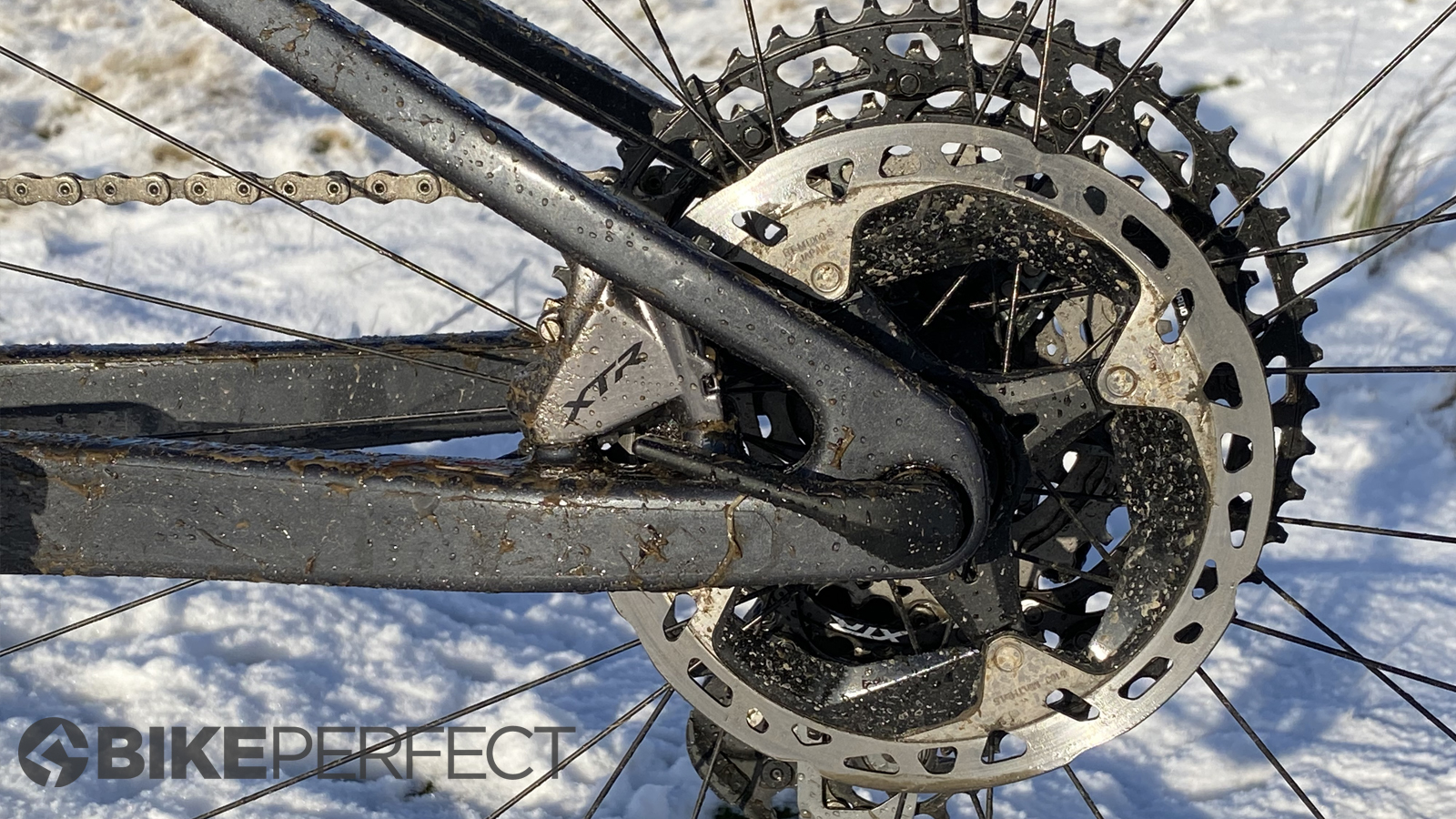

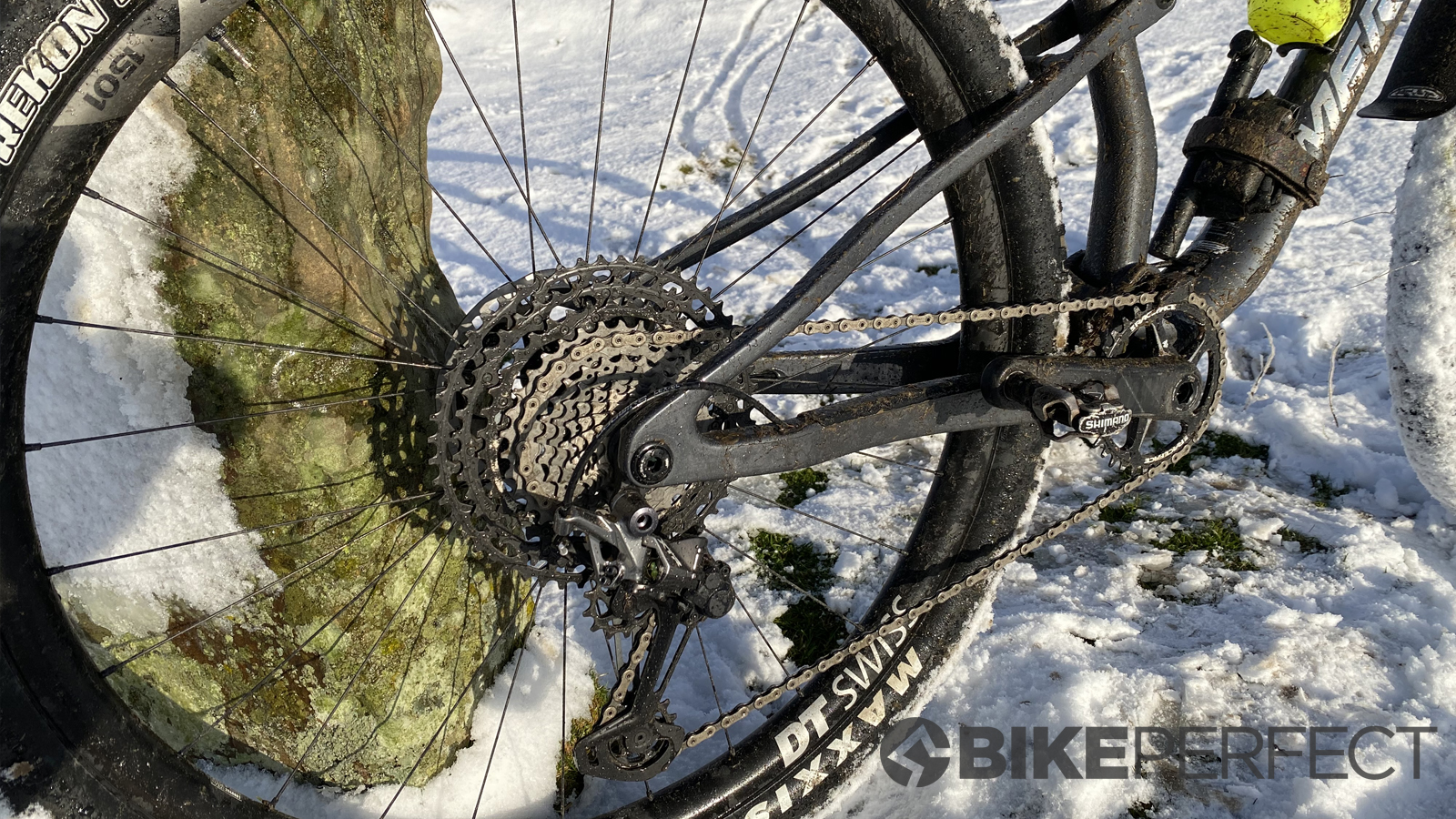
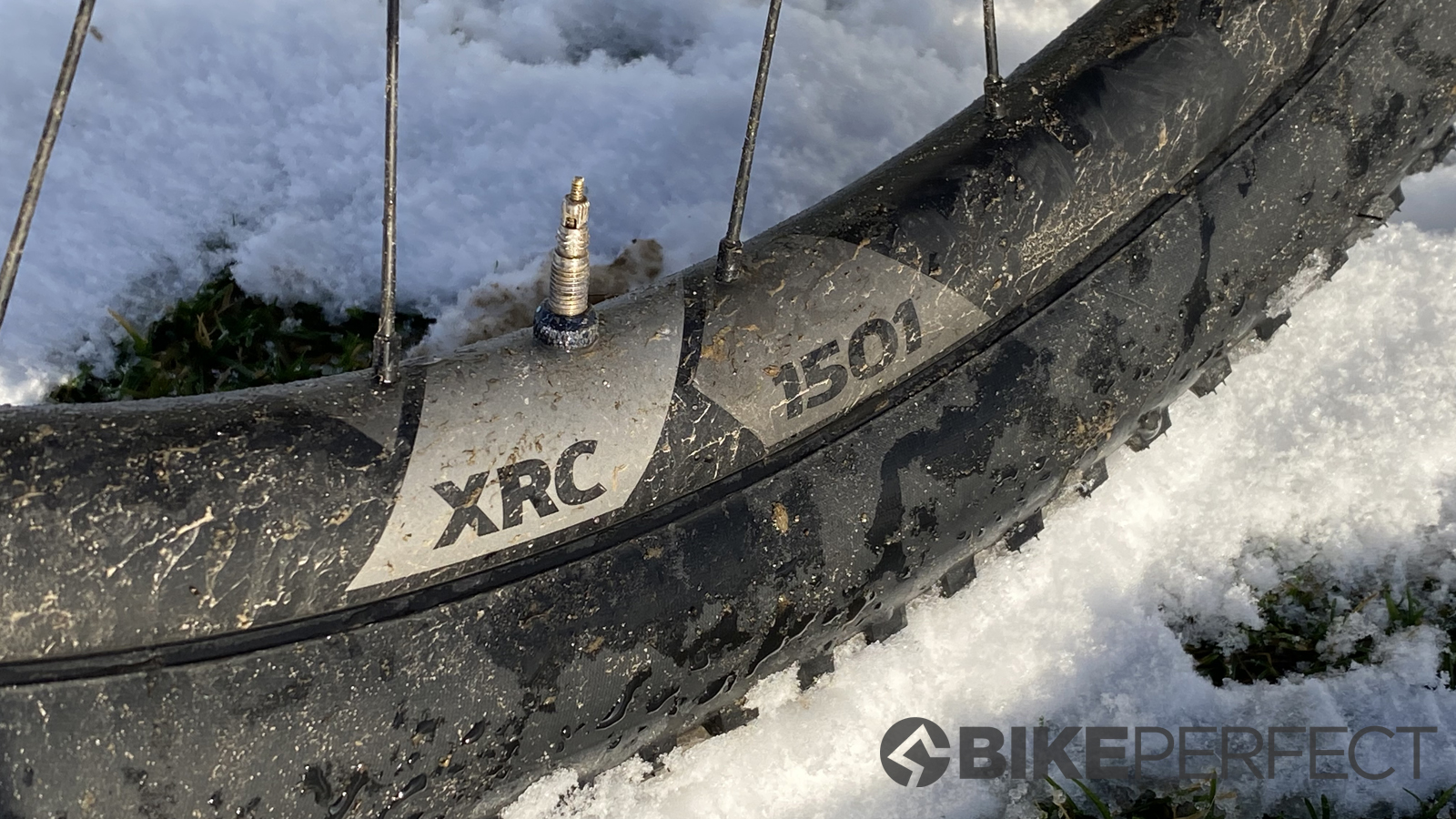
- Best XC forks: the best cross country forks you can buy today
- Best mountain bike tires: all the top mountain bike tires reviewed
Ride, handling and performance
It’s still damn light in the wider MTB picture, so the first ride we took the Ninety-Six on was a ‘seemed like a good idea at the time’ 96km gallop over the Yorkshire Dales in mostly snowy conditions. The fact that we committed to that idea, completed it and felt remarkably fresh afterward says a great deal about the RC 9000.
Some of that distance was on linking road sections where the Rekon Race tires and twin lockout made progress almost gravel bike fast and easy, with minimal tire drag or buzz. There is a slight amount of twist through the rear end if you really get it sideways or you’re driving a ton of torque through it, but that pays off with increased traction and forgiveness on rougher terrain. The front end, with its signature oversized ‘eyebrow’ head tube, is impressively stiff though and doesn’t shimmy or fold up when you brace through the bars either, although at 740mm there’s less leverage available. Reduced leverage makes the flex in the cutaway fork legs and narrow crown stance of the StepCast fork less obvious. Thanks to the tight tracking DT Swiss wheels, it’s accurate enough to pick off tight lines and hold corner-carving speed with reasonable authority. There’s also a surprising amount of grip available from the Maxxis tires, with a predictable extended slide from either end if you do push them beyond their grip limit. The 68.5-degree head angle means steering is still nervy as things get faster and/or steeper, and the longer stem also reduces reaction speed to sudden tire slips or flicked line changes upfront. The decent reach and short fork offset help with underlying stability though so while it’s not the most confident in its class, it’s certainly a lot less terrifying than the previous Ninety-Six.
Cockpit dimensions, combined with the reasonably steep seat angle, mean it still holds a steady line at slow speeds on climbs, with none of the flop or wander associated with a slacker head angle and shorter stem. Add the low weight and explosive acceleration, and it really excels in tight and twisty situations where narrow bars are an advantage. While we didn’t have any positional problems with the slammed setup, Merida realizes some less sadomasochistic riders might struggle, so production bikes will come with 25mm of spacers under the stem. That still leaves it low enough to risk taking a chunk out of the top tube if you jackknife in a crash, but that’s an issue shared with a lot of race-style bikes.
The suspension is really well sorted, and in a less overtly efficient ‘XC’ way than we expected too. There are genuine sensitivity and traction gain through the initial increased leverage part of the stroke, and it stays smooth through rollers, down steps and over rocks and roots at speed. That fluid mid-stroke does mean a bit of bounce if you’re really grunting, but that’s where the lockout comes in. End stroke progression means full travel is rare rather than regular, but it rarely kicks off line as a result and controls landings well. Having a dropper post as standard also gives a big confidence boost when things get rowdier. In other words, while it’s not a bike we’d pick to go KOM hunting down black runs, it’s more than capable of keeping a good pace on less challenging terrain. Perhaps more importantly for its marathon/XC brief, it’s also smooth and supple enough to keep fatigue at bay, even when hammering hard across frozen tundra, rocks and tractor ruts for hours.
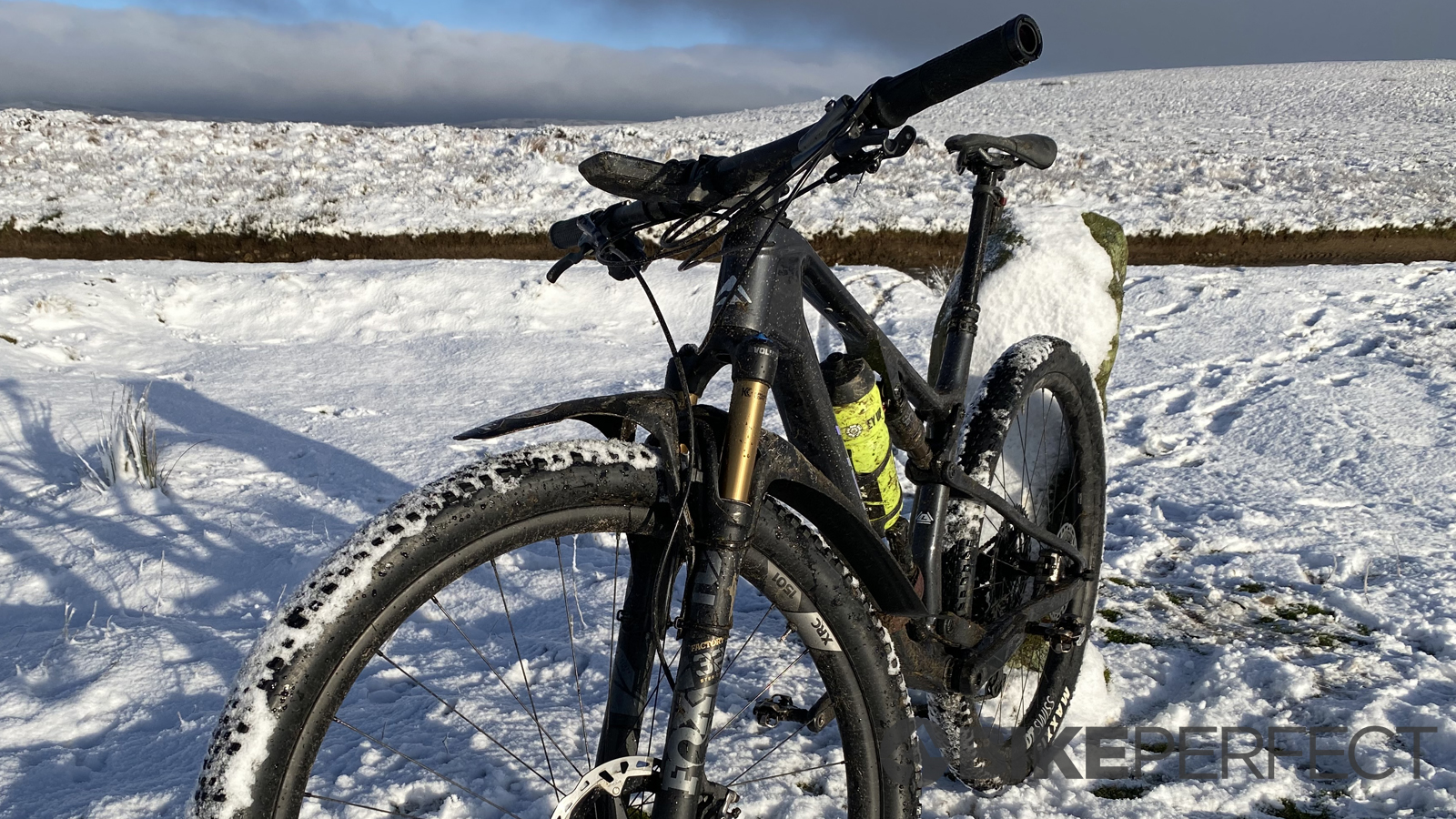
Unfortunately, that was brought home regularly by the fact that the TwistLoc remote regularly ‘locked’ on its own accord - or through accidental grip twist - generally on the roughest parts of descents where we needed it most, which isn’t the first time we’ve had that issue on a bike. The whole grip section also twisted around repeatedly until we loaded the already grip textured bars with extra carbon paste, which suggests the super light Merida bars are slightly undersized.
Wandering bite point on XTR brakes is a regular curse, and it reared its head on both ends of the Merida on a regular basis. Coupled with severe pad squeal that often made descents a raucous experience and first pull anchor reaction a worrying lottery. Shifting was immaculate throughout testing though, and the DT Swiss 240 hubs and carbon rims have proven to be durable maximum mileage components.
Verdict
Squealing, random response brakes and slipping lockout were an irritating blight on testing, but the underlying performance of Merida’s new Ninety-Six still shined through. It’s still very much a race bike in steering feel, but there is enough length and fork offset stability to let you appreciate the really well-sorted suspension. The benefits of traction and fatigue reduction are very clear too, combined with the low weight, to make epic marathons or flat out technical circuit speed a lot easier. Brakes and lockout aside, the premium component spec is excellent value for money compared to other shop-bought flagship racers too, although the weight is higher.
Tech Specs: Merida Ninety-Six RC 9000
- Discipline: XC/Marathon
- Price: £7300.00
- Head angle: 68.5-degrees
- Seat angle: 76.5-degrees (S, M), 76-degrees (L, XL)
- Frame material: CF5 III ‘Nano Matrix’ carbon fiber
- Size: Large
- Weight: 10.81kg
- Wheel size: 29-inch
- Suspension (front/rear): Fox Factory 32 Float StepCast, 100mm travel, 44mm offset/Fox Factory Float DPS remote 100mm travel.
- Components: Shimano XTR 12-speed gearing and shifter with Race Face Next SL 34T chainset. Shimano XTR brakes with 180/160mm rotors. Maxxis Rekon Race EXO TR 29 x 2.25in rear tires on DT Swiss XRC 1501 Spline wheels. Merida Team CC 740mm bar and 70mm stem, Fox Factory Transfer 150mm dropper post, Prologo Scratch M5 PAS saddle.
Test conditions
- Temperature: 8-18 degrees Celsius, 46-64 degrees Fahrenheit.
- Surface: Moorland and woodland natural trails, man-made blue and red grade trails.

Guy Kesteven has been working on Bike Perfect since its launch in 2019. He started writing and testing for bike mags in 1996. Since then he’s written several million words about several thousand test bikes and a ridiculous amount of riding gear. He’s also penned a handful of bike-related books and he reviews MTBs over on YouTube.
Current rides: Cervelo ZFS-5, Specialized Chisel, custom Nicolai enduro tandem, Landescape/Swallow custom gravel tandem
Height: 180cm
Weight: 69kg
